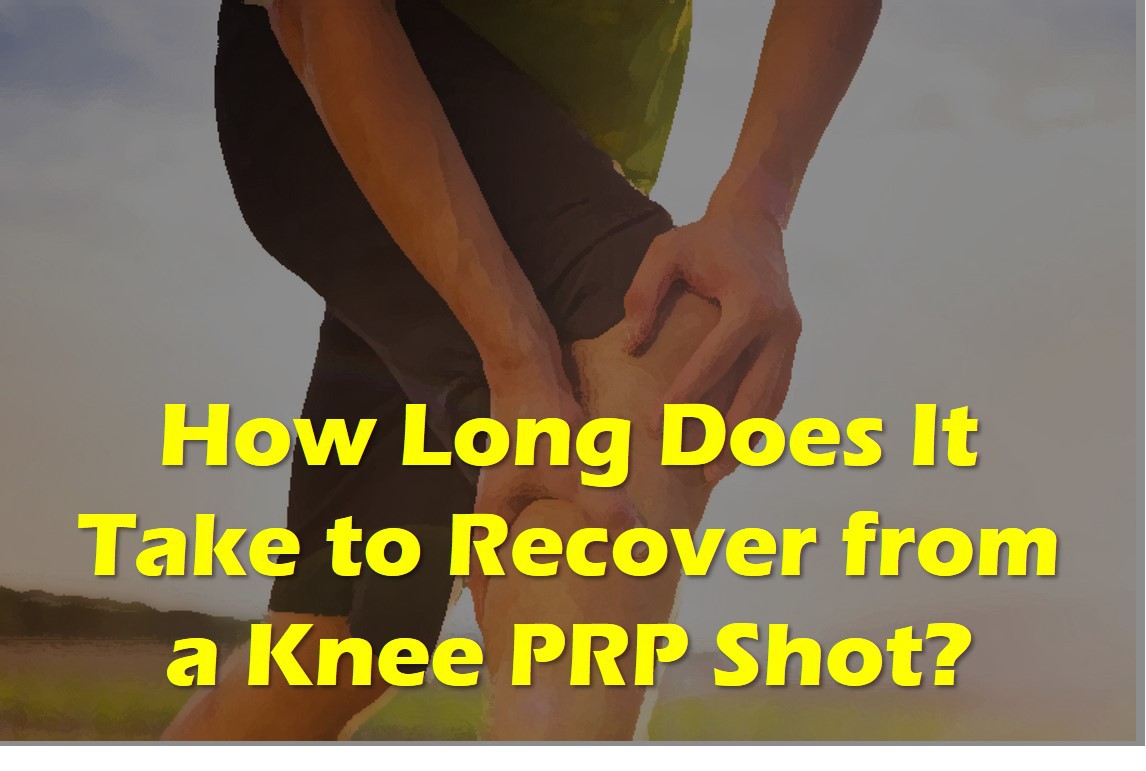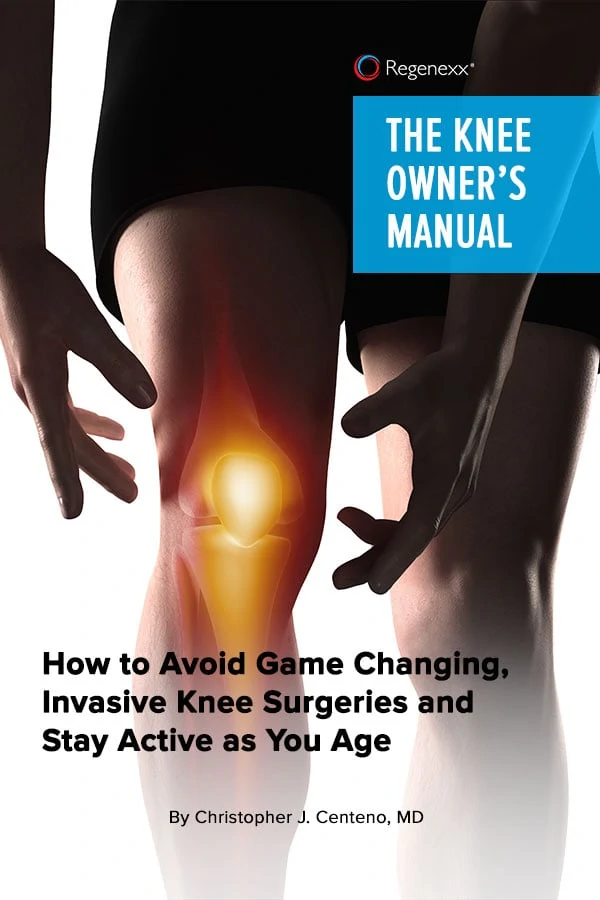How long does it take to recover from a knee PRP injection? When can you walk? How long does it take for a knee PRP injection to work? Let’s dig into PRP injection knee recovery time.
What Is PRP Injection Knee Recovery Time?
To understand PRP injection knee recovery time you first have to understand what PRP is and what it does. PRP stands for Platelet Rich Plasma which means that the doctor takes blood and uses a machine to concentrate your platelets in your plasma. These platelets have growth factors that can help tissues heal.
The first thing that happens when a knee is injected with PRP is inflammation (1). This is usually felt as swelling in the knee. Based on some studies, red PRP (leukocyte rich) causes more swelling than amber PRP (leukocyte poor), but other research disputes that claim (2). This phase should last a few days to about a week. During this time we recommend as much activity as you feel able to do, and listening to your body. You may also ice the knee if the swelling is more severe.
The next phase is after the acute swelling goes down and cell growth is being stimulated. There is actually a reduction of inflammation during this phase (3). During this time the knee feels better with less pain. This is usually the first week or two after the injection and there typically is no activity restriction during this time.
Can I walk after PRP injection?
Yes, we encourage our patients with a knee PRP injection to walk as soon as they’re able. However, If you have more than 2/10 pain that’s from the injection then you need to back off. During the first week, keep your walking to under a mile, but after that, you’re good to walk as much as tolerated, as long as your pain is minimal.
How Long Should You Rest after PRP injection?
There is usually no specific rest period required after a knee PRP injection. Meaning you can walk around right after the injection. Bracing or crutches would not usually be required.
How Long does it Take for PRP Injections to Work?
PRP in the knee typically takes a few weeks to begin to make the knee feel better but can take up to 1 month (4). If you’re not experiencing relief by 2-3 months, then the procedure was likely ineffective. Knees with more severe arthritis may not respond as well to PRP.
How Effective is PRP Treatment for Knee Pain?
In a recent larger review of many different high-level studies, PRP was shown to be effective in treating knee arthritis (5). Some research shows that PRP tends to work better in patients with less severe arthritis (6), while another shows that the severity of arthritis makes no difference (7).
How Do You Know If You Have a Problem?
What if your PRP injection knee recovery time is taking too long or what if you’re not recovering from a knee PRP injection? Meaning you had an injection and it caused worse pain and/or the pain keeps getting worse? An infection is the first thing to rule out. This means that bacteria could have been seeded into the joint during the injection itself. This can sometimes be accompanied by fever, chills, or sweats. Other things that could be happening include cartilage or bone damage from the procedure, which would be more common if the injection was performed blind (without imaging guidance) with a bigger needle. Why? Getting into the knee joint accurately happens only 6 in 10 times without the use of imaging guidance (8).
The upshot? PRP knee injection recovery time is usually minimal. There may be some initial soreness, but usually, that can be mitigated by using ultrasound guidance to make sure you’re really injecting into the joint!
__________________________________________________
Ryan’s journey through PRP knee recovery.
References:
(1) Bennell KL, Hunter DJ, Paterson KL. Platelet-Rich Plasma for the Management of Hip and Knee Osteoarthritis. Curr Rheumatol Rep. 2017 May;19(5):24. doi: 10.1007/s11926-017-0652-x.
(2) Riboh JC, Saltzman BM, Yanke AB, Fortier L, Cole BJ. Effect of Leukocyte Concentration on the Efficacy of Platelet-Rich Plasma in the Treatment of Knee Osteoarthritis. Am J Sports Med. 2016 Mar;44(3):792-800. doi: 10.1177/0363546515580787.
(3) Huang G, Hua S, Yang T, Ma J, Yu W, Chen X. Platelet-rich plasma shows beneficial effects for patients with knee osteoarthritis by suppressing inflammatory factors. Exp Ther Med. 2018;15(3):3096–3102. doi: 10.3892/etm.2018.5794
(4) Elik H, Doğu B, Yılmaz F, Begoğlu FA, Kuran B. The Efficiency of Platelet Rich Plasma Treatment in patients with knee osteoarthritis. J Back Musculoskelet Rehabil. 2019 May 10. doi: 10.3233/BMR-181374.
(5) Xing D, Wang B, Zhang W, Yang Z, Hou Y1,2, Chen Y, Lin J. Intra-articular platelet-rich plasma injections for knee osteoarthritis: An overview of systematic reviews and risk of bias considerations. Int J Rheum Dis. 2017 Nov;20(11):1612-1630. doi: 10.1111/1756-185X.13233.
(6) Burchard R, Huflage H, Soost C, Richter O, Bouillon B, Graw JA. Efficiency of platelet-rich plasma therapy in knee osteoarthritis does not depend on level of cartilage damage. J Orthop Surg Res. 2019;14(1):153. Published 2019 May 24. doi:10.1186/s13018-019-1203-0
(7) Burchard R, Huflage H, Soost C, Richter O, Bouillon B, Graw JA. Efficiency of platelet-rich plasma therapy in knee osteoarthritis does not depend on level of cartilage damage. J Orthop Surg Res. 2019;14(1):153. Published 2019 May 24. doi:10.1186/s13018-019-1203-0
(8) Chernchujit B, Tharakulphan S, Apivatgaroon A, Prasetia R. Accuracy comparisons of intra-articular knee injection between the new modified anterolateral Approach and superolateral approach in patients with symptomatic knee osteoarthritis without effusion. Asia Pac J Sports Med Arthrosc Rehabil Technol. 2019;17:1–4. Published 2019 Mar 26. doi: 10.1016/j.asmart.2019.02.001

